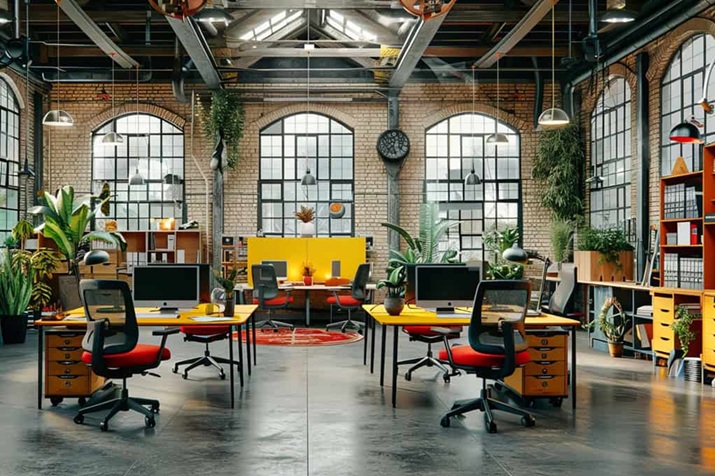The rise of co-working spaces has transformed the way people approach work. No longer confined to traditional cubicles or isolated home offices, professionals now seek environments that encourage collaboration, flexibility, and inspiration. A well-designed co-working area does more than just provide desks and Wi-Fi, it shapes the culture, workflow, and creativity of the people who use it.
Whether you’re a freelancer, entrepreneur, or part of a small team, the way your workspace is designed can directly impact productivity, collaboration, and overall job satisfaction.
Understanding the Core Principles of Co-Working Design
At the heart of any great co-working space is the balance between functionality and atmosphere. While productivity requires a level of structure, creativity thrives in a flexible and inspiring setting. Achieving this balance begins with understanding the needs of the people who will be using the space.
Lighting, for instance, plays a pivotal role. Natural light improves mood, reduces eye strain, and helps maintain energy levels throughout the day. Complementing daylight with adjustable task lighting ensures that the space remains comfortable regardless of the time or weather.
Acoustics are equally important. Open-plan layouts may foster collaboration, but without proper sound management, they can quickly become noisy and distracting. Incorporating soft furnishings, sound-absorbing panels, and designated quiet zones can maintain a healthy balance between interaction and focus.
Zoning for Different Work Styles
One of the most effective ways to design a productive co-working space is through zoning, creating distinct areas that cater to different modes of work.
A collaborative zone, complete with large tables, whiteboards, and comfortable seating, encourages brainstorming and group discussions. Quiet zones or library-style areas cater to those who need uninterrupted concentration. Social zones, such as lounges or kitchen areas, foster networking and informal conversations, helping members build valuable connections.
For professionals who need greater privacy or handle sensitive information, private work areas are essential. In cities like Melbourne, the demand for adaptable options such as a private office Melbourne area has grown, giving individuals and small businesses the flexibility of a dedicated workspace within a vibrant co-working community.
The Role of Aesthetics in Inspiring Creativity
While functionality ensures a space works well, aesthetics create the emotional connection that keeps people motivated. Colours, textures, and materials can be used strategically to influence mood and energy. Warm tones like terracotta or mustard can encourage comfort and social interaction, while cooler shades like blue and green can evoke calm and focus.
Incorporating greenery not only improves air quality but also boosts creativity and reduces stress. Plants, living walls, and even small indoor gardens can transform a sterile office into a refreshing and engaging environment.
Technology as an Enabler of Productivity
In today’s digital world, a co-working space must be equipped with more than just strong Wi-Fi. Fast, secure internet connections, wireless charging stations, and well-maintained printing facilities are essential basics.
For hybrid work models, integrated video conferencing systems in meeting rooms are crucial, enabling seamless communication with remote clients and team members. Some spaces even offer app-based booking systems for desks, rooms, and events, ensuring efficient use of shared resources.
Smart climate control systems that maintain optimal temperature and air quality can further enhance comfort, keeping members focused throughout the day.
Building a Sense of Community
A co-working area’s success often hinges on the strength of its community. While design sets the stage, intentional programming fosters genuine connections. Hosting regular workshops, networking events, and wellness activities can help members interact beyond their immediate work projects.
Even subtle design features, such as communal coffee bars or flexible seating arrangements, can encourage spontaneous conversations, the kind that often lead to creative collaborations and new opportunities.
Designing for the Future of Work
As work styles evolve, co-working spaces must remain adaptable. Modular furniture, movable partitions, and multi-functional areas allow spaces to be reconfigured quickly in response to changing needs. Sustainability is also becoming a key consideration, with eco-friendly materials, energy-efficient lighting, and waste reduction practices increasingly shaping modern workspace design.
Ultimately, designing the perfect co-working area is about more than aesthetics or amenities, it’s about creating a space that inspires productivity, nurtures creativity, and supports the well-being of its members. By thoughtfully blending functional design, inspiring aesthetics, and a strong sense of community, co-working spaces can become more than just places to work, they can become places where ideas flourish and businesses thrive.


Comments are closed.